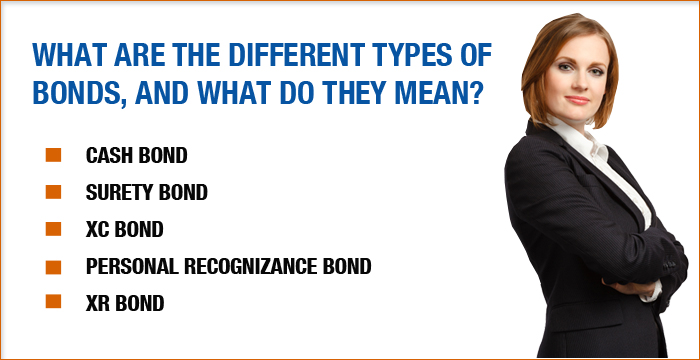Below are the different types:
CASH BOND
Just as it states, a cash bond is an amount of bail that must be paid in full, and with cash. It doesn’t matter who posts/pays the bond. So long as it is paid in full, you are released. Even more interesting, a cash bond can be refunded upon the completion of your case, so long as there are no outstanding fees, restitution, or fines left unpaid. In fact, an attorney who has not been paid in full can ask the judge to release the cash bond to pay for their legal services yet to be paid.
Example: Judge orders a $500 cash bond. You must pay $500 to be released. Upon the completion of the case, it can possibly be refunded in full.
SURETY BOND
This is probably the most common type of bond that is ordered by a judge. A surety bond is 10% of the total bond ordered by the court, and it must be paid in full before you can be released from custody. This is done by way of a a bail bondsman who then posts bail on your behalf. If you were to abscond, or fail to appear, the bail bondsman is then on the hook for the remaining portion of the bond. Yep,the whole amount. (Now you know why Dog the Bounty Hunter would follow someone to Mexico and get arrested himself just to get them to appear for court again.) This type of bond is nonrefundable.
Example: Judge orders a $20,000 surety bond. The bail bondsman is paid $2,000 by a person on your behalf, and the bondsman is liable for the full amount if the Defendant fails to appear in court.
XC BOND>
This is a relatively new type of bond that seems to be currying favor with the courts and is being implemented more frequently as of late. It’s a mix of a surety bond and a cash bond — with any combination thereof (i.e. heavy cash bond, low surety / low cash bond, heavy surety / equal cash bond, equal surety, etc.). It truly is up to the judge.
Example: Judge orders $500 cash bond and $5,000 surety. Any number of people can post the cash bond (and its refundable), while the $5,000 bond must be posted by a bail bondsman.
PERSONAL RECOGNIZANCE BOND
Also known as a PR bond, a personal recognizance bond is very similar to a surety bond in that it only takes 10% of the total bond to bail the person out of custody. However, the main difference is that a PR bond, must be posted by someone other than a bail bondsman. Judges use this to make sure defendant’s families, if they post the bond, will make sure the defendant comes to court.
Example: Judge orders $10,000 PR bond. $1,000 can be paid by anyone, but not a bondsman.
XR BOND
This is also a relatively new type of bond. Like an XC bond, it’s a combination of bonding. It’s a mix of a PR bond and a surety bond — again, with any combination thereof.
Example: Judge orders a $5,000 surety bond & a $5,000 PR bond. A bail bondsman must pay the $500 requirement of the surety bond, while anyone can pay the $500 requirement of the PR bond.
Often times, a bail bondsman requires some type of collateral before posting bail on a defendant’s behalf. That’s because, as stated above, they are on financially responsible for the entire bail amount ordered by the judge.
Types of collateral range from cars, houses, jewelry, contractual guaranties, etc. In extreme cases, if the defendant has shown a repeat history of failing to appear for court after posting bail in the past, a bail bondsman will refuse to bail the defendant out of jail. If they do post bond on behalf of the defendant, and that person fails to appear for court, often the court issues a warrant with a No Bond Hold, and the bail bondsman is granted the authority to arrest the defendant if necessary.
With all that said, the truth of the matter is a bond can range from a few hundred dollars for first time offenders and/or small, petty crimes all the way up to hundreds of thousands of dollars or millions of dollars if the crime is much greater in weight or the defendant is a flight risk. And, as stated earlier, in the most extreme of cases, a court can issue a No Bond Hold if it deems the defendant is a strong flight risk, the defendant has picked up a case while out on bond, or if the crime alleged is of such a serious nature that the judge feels that the community is in danger with the defendant on the streets.
In the end, no matter what the bail is initially set at, it’s important that you hire an attorney that understands the bonding process so that a bond review can be conducted on your behalf. At that hearing, an attorney will often contest the current amount of bond ordered by the court in an attempt to have it lowered, or to have you OR’d by the court. Your attorney will then attempt to establish your connections to the community, your ties to family, your employment status, your criminal history, your successes in the past at returning to court while out on bond, etc. (All of which are very important to the judge!)
Call us toll-free at 1-800-793-2245 for more information. Our experienced bail bond agents are waiting to answer your questions.


